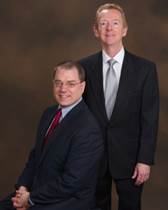Want the latest retirement plan adviser news and insights? Sign up for PLANADVISER newsletters.
Tracking Time
Professional retirement plan advisers do a ton of good work every day, collectively helping millions of Americans achieve better retirement savings outcomes. Margins are not fat at most advisory shops, so to be able to continue to do the “good work,” advisers need to keep an eye on their revenue, which translates into getting paid for their time. Sure, there are additional factors in determining fair compensation, such as fiduciary exposure, model portfolio management, and level of expertise, but the biggest factor is time.
A seasoned adviser can estimate the time demands of a plan client based upon a detailed service agreement or through past experience with similar clients. But, sometimes, things don’t go as anticipated. The scope of the work may change, or a plan may be unusually needy of attention. Sometimes the extra workload is temporary, and sometimes…
Without tracking your time, how do you know whether a particular client relationship is financially viable? Spending double the anticipated number of hours on a plan is effectively taking a 50% pay cut. Without knowing approximately how much time is devoted to serving a plan, how can you assess the reasonableness of your own fee? Too low? Too high? Just right?
On the other hand, obsessing over time can be counterproductive. It takes time to track time, and software for this purpose can be expensive. Excessive focus on time can change the dynamic of a client relationship. Clients are very sharp, and can sense cut-backs in the attention they are receiving. Conversely, if you start explicitly billing for your time, the client may develop concern that your normal chit chat has devolved into a billing opportunity.Excessive focus on billable hours can cause friction within an advisory shop. Wasting time isn’t good, but there is a fair amount of time that should be spent reading industry publications and attending workshops and conferences in order to maintain or increase your effectiveness for your clients. Your level of specialized knowledge should impact your hourly value, but the time spent acquiring the knowledge doesn’t bring revenue into the shop.
Different approaches will work for different advisory firms. One approach would be to make an annual estimation of the amount of time each plan has consumed. Weekly or monthly notes or a running activity log will facilitate this. Knowing how your time is being spent will allow a reasonableness assessment to be made on each of your plans’ level of fees. This is consistent with the requirements of 408(b) (2) and it makes good business sense. Consistently delivering good value strengthens and lengthens client relationships.
Jim Phillips, President of Retirement Resources, has been in the investment industry for more than 35 years, the past 18 of which have been focused in the area of qualified retirement plans. Jim worked for major national investment firms for 14 years before “going independent” in 1990. Jim is an Accredited Investment Fiduciary, has contributed to two books on 401(k), and his articles have been published in Defined Contribution Insights, PLANSPONSOR’s (b)lines and ASPPA’s 403(b) Advisor, and Jim is a RetireMentor on MarketWatch.com. His work has been acknowledged with multiple Signature Awards from the PSCA, he has been named to the 2012 and 2013 list of Top 100 Retirement Plan Advisers, by PLANADVISER Magazine, and he was a finalist in 2012 for the Morningstar/ASPPA 401(k) Leadership Award. Jim has been a frequent speaker at national conferences, including SPARK, ASPPA, AAO and the PLANSPONSOR and PLANADVISER National Conferences.
Patrick McGinn, CFA, Vice President of Retirement Resources, is a CFA charterholder and has been in the securities industry since 1993. In addition to the Chartered Financial Analyst designation, he is an Accredited Investment Fiduciary and a member of the Boston Security Analyst Society. Together with Jim, Patrick has co-authored a number of articles which have been published in industry publications on topics about managing successful 401(k) and 403(b) plans. His work has been acknowledged with multiple Signature Awards from the PSCA, and he has been named to the 2012 and 2013 list of Top 100 Retirement Plan Advisors, by PLANADVISER Magazine. He was a finalist in 2012 for the Morningstar/ASPPA 401(k) Leadership Award.
NOTE: This feature is to provide general information only, does not constitute legal advice, and cannot be used or substituted for legal or tax advice.
You Might Also Like:

More Than Half of Plan Advisers Expect to Use AI

2023 Retirement Plan Adviser of the Year Finalists

